 1983 Peugeot 205 I (20A/C, facelift 1987) 3-door Dimensions, Size & Specs
1983 Peugeot 205 I (20A/C, facelift 1987) 3-door Dimensions, Size & SpecsMeasurements of the 1983 Peugeot 205 I 3-door, engineered for optimal performance and comfort
| Dimensions | |
|---|---|
| Length: | 3705 mm145.9 in12.2 ft |
| Width: | 1560-1572 mm61.4-61.9 in5.1-5.2 ft |
| Height: | 1355-1375 mm53.3-54.1 in4.4-4.5 ft |
| Trunk Capacity: | 216-290 liter7.6-10.2 cu ft |
| Trunk Capacity (Max): | 564-585 liter19.9-20.7 cu ft |
| Weight Specifications | |
| Curb Weight: | 740-880 kg1631-1940 lbs |
| Maximal permitted Weight: | 1160-1325 kg2557-2921 lbs |
| Tire Specifications | |
| Rims Sizes: |
|
| Tire Sizes: |
|
The Peugeot 205 I 3-door hatchback, produced between 1987 and 1998 following its 1987 facelift, is a quintessential compact vehicle that marked Peugeot’s success in the small car segment. With an overall length of 3705 mm (145.9 inches), this hatchback strikes a balance between urban maneuverability and interior space efficiency. Its width varies slightly between 1560 mm (61.4 inches) and 1572 mm (61.9 inches), while height ranges from 1355 mm (53.3 inches) to 1375 mm (54.1 inches), giving the car a low-profile and sporty stance. The curb weight spans from a light 740 kg (1,631 lbs) up to 880 kg (1,940 lbs), depending on specific trims and equipment, which contributes to its agile driving dynamics and fuel economy. When fully loaded, the maximum weight supported ranges between 1160 kg (2,557 lbs) and 1325 kg (2,922 lbs), suitable for daily commuting and small family needs.
The Peugeot 205’s cargo space provides practical versatility: the luggage capacity starts from 216 liters (7.6 cubic feet) behind the rear seats, expandable up to 290 liters (10.2 cubic feet) in some configurations. Folding down the rear seats significantly increases storage space, offering between 564 liters (19.9 cubic feet) and 585 liters (20.6 cubic feet) of usable volume, ideal for larger items or luggage transport. The 205 supports rim sizes from 13 to 15 inches, accommodating tire sizes like 185/55 R15, 165/70 R13, and 185/60 R14 to suit different driving preferences and road conditions.
Overall, the Peugeot 205 I facelift 3-door hatchback blends compact dimensions with flexible interior space, making it a beloved classic for those seeking a practical yet spirited urban car from the late 1980s and 1990s.
Discover the standout features that make the 1983 Peugeot 205 I 3-door a leader in its class
Have a question? Please check our knowledgebase first.
The Peugeot 205 I (20A/C, facelift 1987) 3-door hatchback measures approximately 3705 mm (145.9 inches) in length, making it a compact car suitable for city driving and parking. Its width varies slightly between 1560 mm to 1572 mm (61.4 to 61.9 inches), depending on the specific model or trim, allowing for adequate cabin space while maintaining a slim profile. The height ranges from 1355 mm to 1375 mm (53.3 to 54.1 inches), providing a balanced stance and comfortable headroom for passengers. These dimensions illustrate the 205 I’s status as a small, nimble hatchback popular in the 1980s and 1990s.
The curb weight of the Peugeot 205 I (20A/C, facelift 1987) 3-door ranges between 740 kg and 880 kg (1,631 to 1,940 pounds). This relatively lightweight makes the car nimble and responsive, contributing positively to handling and acceleration. The maximum allowable weight, including passengers and cargo, is between 1160 kg and 1325 kg (2,557 to 2,920 pounds), ensuring the vehicle can carry a reasonable load beyond the curb weight. This lightweight nature also helps improve fuel efficiency compared to heavier vehicles of the era, making the 205 I economical for daily use. However, the performance will vary depending on the engine variant paired with this chassis and weight.
The Peugeot 205 I offers a luggage capacity ranging from 216 liters to 290 liters (7.6 to 10.2 cubic feet) with the rear seats in their upright position. This space is reasonable for a supermini class hatchback, suitable for groceries or small suitcases. When the rear seats are folded down, the luggage capacity expands significantly to between 564 liters and 585 liters (19.9 to 20.7 cubic feet), allowing for the transportation of larger items or more cargo. This flexibility makes the 205 I a practical choice for small families or individuals who occasionally need extra storage space.
The Peugeot 205 I supports a variety of rim sizes, including 13, 14, and 15-inch wheels. Compatible tire sizes include 135/80 R13, 145/80 R13, 155/70 R13, 165/70 R13, 185/60 R14, 185/55 R15, and 185/55 R15. The relatively modest tire widths and smaller rim diameters contribute to a ride quality that balances comfort with responsive handling. Smaller rims with higher profile tires, such as 13-inch options, offer more cushioning and absorb road imperfections better, which is ideal for city driving. Larger 15-inch rims with lower profile tires tend to provide better grip and sharper handling, favored in sportier configurations or by enthusiasts aiming for performance.
Yes, the Peugeot 205 I (20A/C, facelift 1987) 3-door comfortably fits into a standard residential garage. With a length of 3705 mm (approximately 145.9 inches or 12.16 feet), width between 1560 mm and 1572 mm (61.4 to 61.9 inches or about 5.12 feet), and height up to 1375 mm (54.1 inches or 4.5 feet), it is smaller than the typical dimensions of most single or double garages. Standard garages usually offer about 6 meters (20 feet) in length and around 2.5 to 3 meters (8 to 10 feet) in width, so the car’s compact size ensures easy parking and maneuvering within these spaces.
The 1987 facelifted Peugeot 205 I maintained very similar compact dimensions as its original 1983 version, with minor refinements. Compared to the pre-facelift model, the length remained near 3705 mm (145.9 inches), and width and height saw only slight adjustments within the 1560-1572 mm (61.4-61.9 inches) and 1355-1375 mm (53.3-54.1 inches) ranges respectively. These subtle dimensional changes were mainly geared toward improved aesthetics and aerodynamics rather than a significant size increase. Thus, the facelift preserved the 205’s reputation for being a nimble and compact supermini hatchback. The overall curb and maximum weights stayed similarly within the ranges offered by the predecessor, ensuring consistent handling and performance characteristics.
When compared with other popular compact hatchbacks from the late 1980s and early 1990s, such as the Volkswagen Golf Mk2, Ford Fiesta Mk3, or the Renault 5, the Peugeot 205 I is slightly shorter and narrower in length and width, emphasizing its city-friendly footprint. For example, the Golf Mk2 is around 3,995 mm (157.3 inches) in length and wider at approximately 1,700 mm (66.9 inches). The 205’s smaller dimensions translate into easier urban maneuverability and parking. Luggage capacity with seats up to roughly 290 liters and expanded to around 585 liters with seats folded is competitive but slightly less than some rivals that offered more extensive cargo space. Overall, the 205 balances compactness with practicality within its class.
The Peugeot 205 I facelift ranges in width from 1560 mm to 1572 mm (61.4 to 61.9 inches) and height between 1355 mm and 1375 mm (53.3 to 54.1 inches). Its relatively narrow width contributes to agile cornering and easy maneuverability in tight urban environments, while the modest height provides a low center of gravity that benefits stability and handling. The aerodynamic profile, aided by the compact height and sloped hatchback design, improves fuel efficiency and reduces wind noise at higher speeds. Together, these dimensions make the 205 a balanced vehicle offering responsive driving dynamics.
Despite its compact exterior dimensions, the Peugeot 205 I makes effective use of interior space to maximize passenger comfort, particularly for a supermini hatchback. The two-door configuration may limit rear-seat accessibility but still accommodates four adults with reasonable headroom and legroom, aided by the vehicle's height ranging up to 1375 mm (54.1 inches). The narrow width (around 1560-1572 mm or 61.4-61.9 inches) means the cabin is cozy but functional. The layout is typical for the car's class and era, offering balance between space efficiency and compact footprint, suitable for urban commuting and short trips.
The Peugeot 205 I facelift came with rim sizes of 13, 14, and 15 inches, compatible with several tire sizes such as 135/80 R13, 145/80 R13, 155/70 R13, 165/70 R13, 185/60 R14, and 185/55 R15. Smaller rims with higher profile tires contribute to a cushioned ride suitable for city streets and uneven surfaces, while larger 14 or 15-inch rims paired with wider tires enhance grip and cornering ability, favored for sportier trims or driving enthusiasts. These options allowed some customization for handling characteristics and aesthetics while keeping the car’s overall nimbleness intact.
Discover similar sized cars.
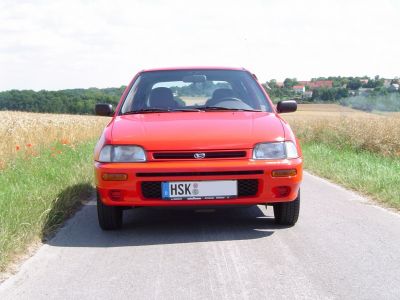
| Production: | 1993-2000 |
|---|---|
| Model Year: | 1993 |
| Length: | 3750-3780 mm147.6-148.8 in |
| Width: | 1620 mm63.8 in |
| Height: | 1390-1410 mm54.7-55.5 in |
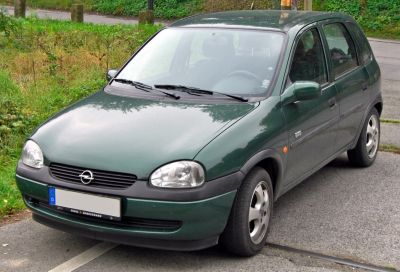
| Production: | 1997-2000 |
|---|---|
| Model Year: | 1997 |
| Length: | 3740 mm147.2 in |
| Width: | 1610 mm63.4 in |
| Height: | 1420 mm55.9 in |

| Production: | 1993-2000 |
|---|---|
| Model Year: | 1994 |
| Length: | 3740 mm147.2 in |
| Width: | 1610 mm63.4 in |
| Height: | 1420 mm55.9 in |

| Production: | 1993-2000 |
|---|---|
| Model Year: | 1993 |
| Length: | 3729 mm146.8 in |
| Width: | 1610 mm63.4 in |
| Height: | 1420 mm55.9 in |
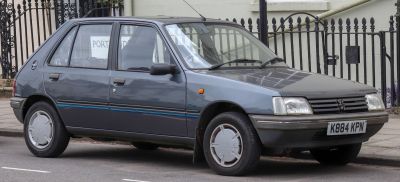
| Production: | 1987-1998 |
|---|---|
| Model Year: | 1987 |
| Length: | 3705 mm145.9 in |
| Width: | 1560-1570 mm61.4-61.8 in |
| Height: | 1355-1375 mm53.3-54.1 in |
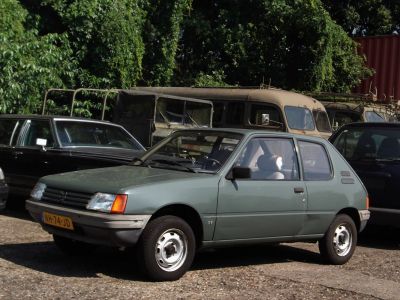
| Production: | 1983-1987 |
|---|---|
| Model Year: | 1983 |
| Length: | 3705 mm145.9 in |
| Width: | 1572 mm61.9 in |
| Height: | 1373 mm54.1 in |
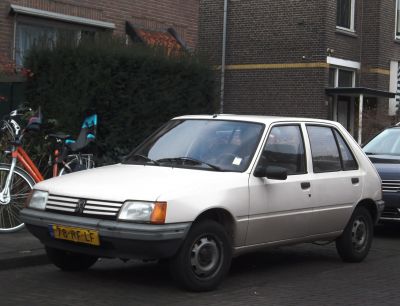
| Production: | 1983-1987 |
|---|---|
| Model Year: | 1983 |
| Length: | 3705 mm145.9 in |
| Width: | 1572 mm61.9 in |
| Height: | 1373 mm54.1 in |

| Production: | 1993-2000 |
|---|---|
| Model Year: | 1993 |
| Length: | 3740 mm147.2 in |
| Width: | 1610 mm63.4 in |
| Height: | 1420 mm55.9 in |
